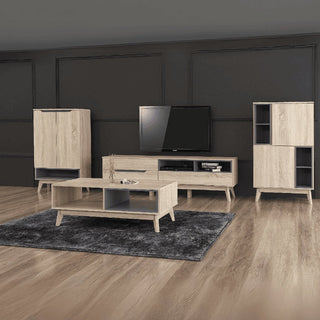Choosing the perfect mattress is a pivotal decision that profoundly impacts your sleep quality and overall health. With a plethora of options available, understanding the nuances of mattress types, firmness levels, and personal sleep preferences is essential. This comprehensive guide will navigate you through the key considerations to help you make an informed choice.
1. Understanding Mattress Types

The mattress market offers various types, each designed to cater to different comfort and support needs. Here’s a breakdown of the most common types:
Innerspring Mattresses
Featuring steel coils for support, innerspring mattresses are known for their durability and breathability. They provide a traditional bouncy feel and are often more affordable. However, they may lack pressure relief and motion isolation compared to other types.
Memory Foam Mattresses
Made from viscoelastic foam, these mattresses conform closely to the body, offering excellent pressure relief and motion isolation. They are ideal for side sleepers and those with joint pain. On the downside, memory foam can retain heat, potentially causing discomfort for hot sleepers.
Latex Mattresses
Constructed from natural or synthetic latex, these mattresses provide a responsive and bouncy feel. They are durable, hypoallergenic, and offer good temperature regulation. Latex mattresses are suitable for those seeking a balance between support and comfort.
Hybrid Mattresses
Combining innerspring coils with layers of foam or latex, hybrid mattresses aim to offer the best of both worlds—support, and comfort. They are versatile and cater to a wide range of sleepers but can be on the pricier side.
Airbeds
Equipped with adjustable air chambers, airbeds allow users to customise firmness levels. They are beneficial for couples with differing preferences and those with specific medical conditions. However, they tend to be more expensive and require regular maintenance.
2. Assessing Firmness Levels

Firmness is a subjective attribute influenced by personal preference, body weight, and sleeping position. Mattresses typically range from soft to firm:
-
Soft: Best for side sleepers, as they provide cushioning for shoulders and hips.
-
Medium: Suitable for back sleepers, offering a balance between support and comfort.
-
Firm: Ideal for stomach sleepers and individuals with higher body weight, providing necessary support to prevent sinking.
It's important to note that firmness labels can vary between manufacturers. Taking advantage of trial periods can help determine the right firmness for you.
3. Considering Sleeping Positions

Your preferred sleeping position plays a crucial role in selecting a mattress:
-
Side Sleepers: Benefit from a softer mattress that cushions pressure points.
-
Back Sleepers: Require a medium-firm mattress to maintain spinal alignment.
-
Stomach Sleepers: Need a firm mattress to prevent the torso from sinking, which can lead to back pain.
-
Combination Sleepers: Should opt for a medium-firm mattress that accommodates various positions.
4. Evaluating Body Weight and Support

Body weight affects how a mattress feels and performs:
-
Lightweight Sleepers (<130 lbs): May prefer softer mattresses for adequate contouring.
-
Average Weight Sleepers (130-230 lbs): Often find medium-firm mattresses comfortable.
-
Heavyweight Sleepers (>230 lbs): Benefit from firmer mattresses that offer enhanced support and durability.
5. Exploring Temperature Regulation

Temperature neutrality is vital for uninterrupted sleep:
-
Memory Foam: Tends to retain heat; look for options with cooling technologies.
-
Latex and Innerspring: Generally offer better airflow and temperature regulation.
-
Hybrid: Varies based on construction; consider models with breathable materials.
6. Assessing Motion Isolation and Edge Support

For couples, motion isolation and edge support are key considerations:
-
Motion Isolation: Memory foam excels in minimising motion transfer, reducing disturbances from a partner's movements.
-
Edge Support: Innerspring and hybrid mattresses often provide robust edge support, increasing usable sleep surface.
7. Considering Durability and Warranty

A mattress is a significant investment; durability ensures longevity:
-
Innerspring: Typically lasts 5-7 years.
-
Memory Foam and Latex: Can last 7-10 years or more.
-
Hybrid: Generally durable, with a lifespan of 6-8 years.
Look for warranties that cover manufacturing defects and offer at least a 10-year coverage.
8. Setting a Budget

Mattress prices vary widely:
-
Budget (<$500): Basic models, often innerspring or foam.
-
Mid-Range ($500-$1,500): Includes higher-quality foam, latex, and hybrid options.
-
Luxury (>$1,500): Premium materials and advanced features.
Remember, a higher price doesn't always equate to better quality. Assess features and materials to determine value.
Final Thoughts
Choosing the perfect mattress is a highly personal decision that requires careful consideration of your sleep position, body weight, firmness preferences, and budget. With so many options available—memory foam, latex, innerspring, hybrid, and adjustable air beds—it’s essential to find the right balance of comfort, support, and durability to ensure restful sleep.
Take advantage of trial periods, read customer reviews, and prioritise features that align with your needs, such as motion isolation, edge support, and temperature regulation. Remember, a quality mattress is an investment in your health and well-being, so choose wisely!








